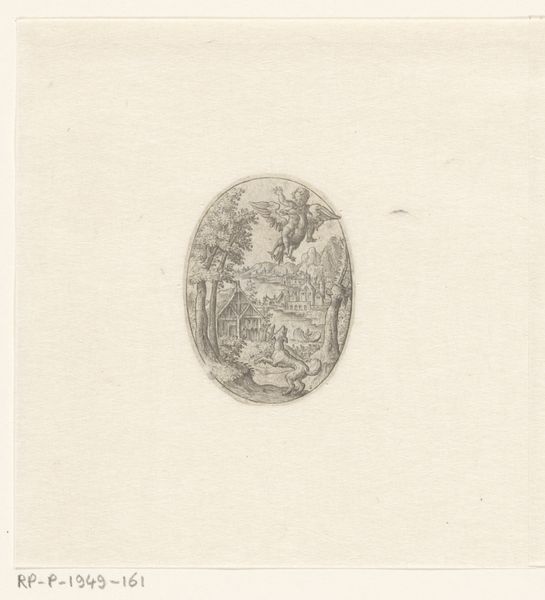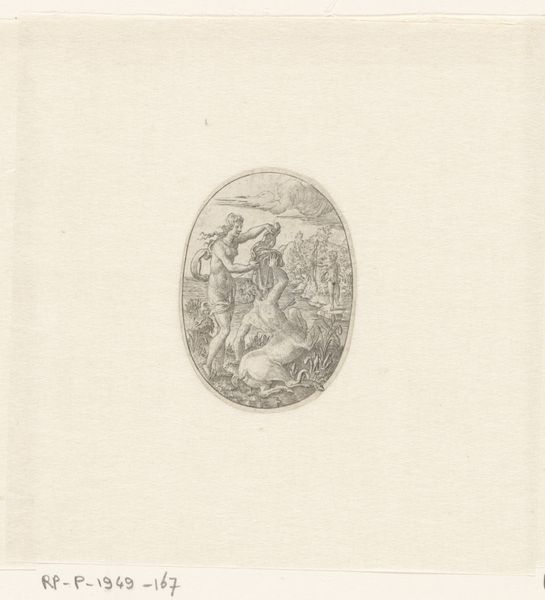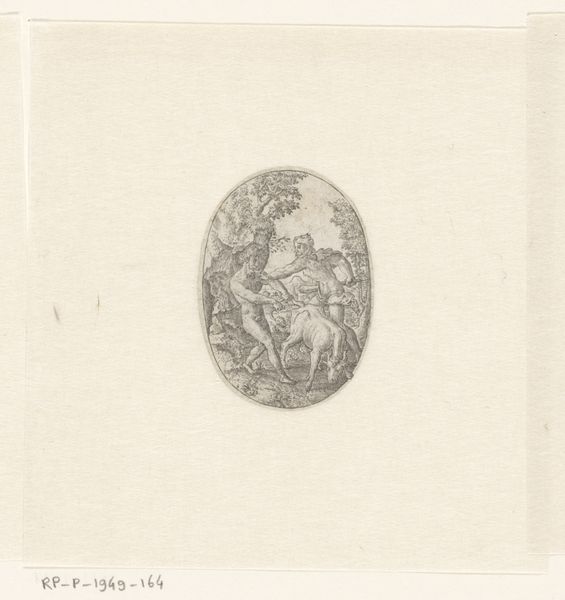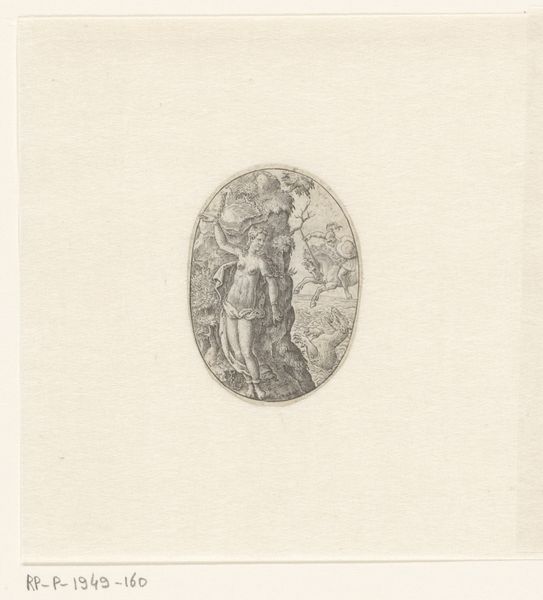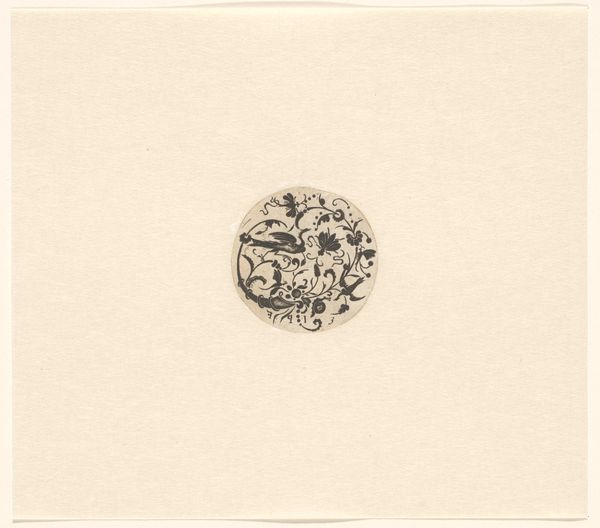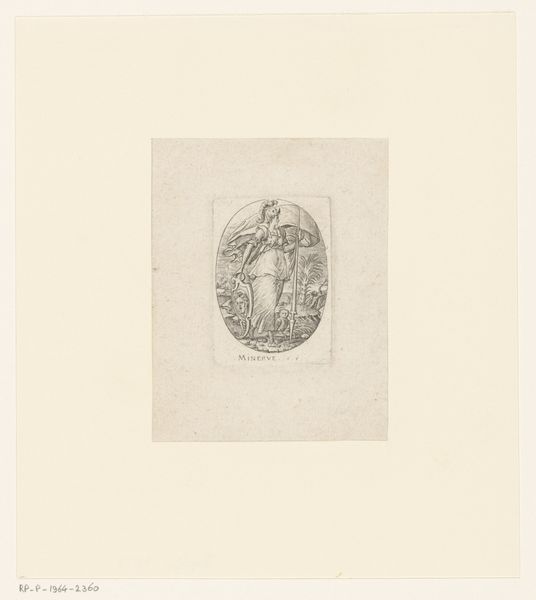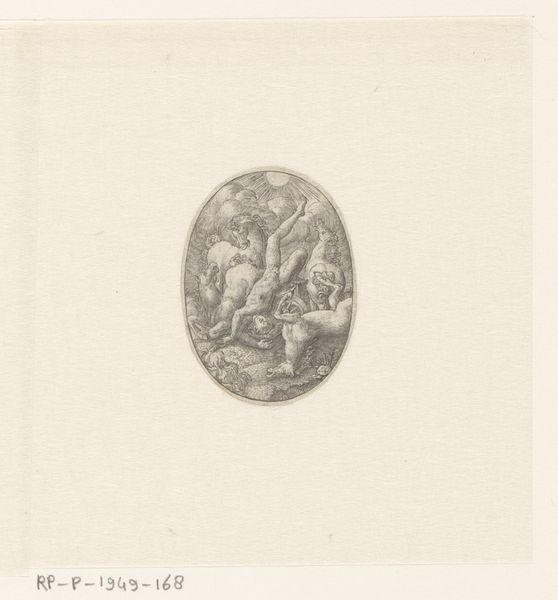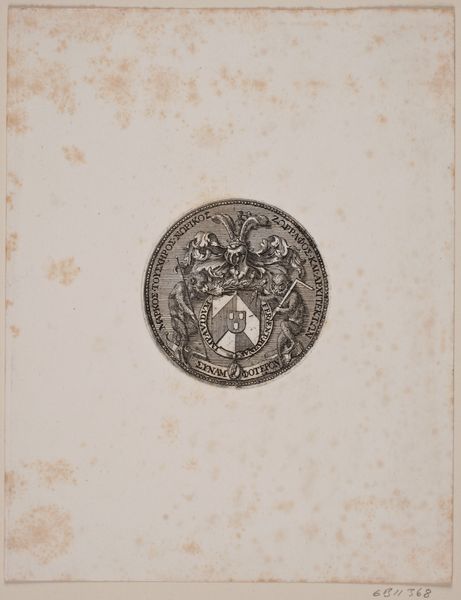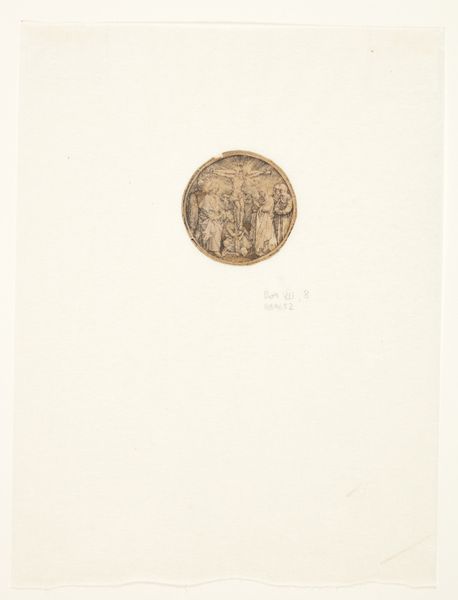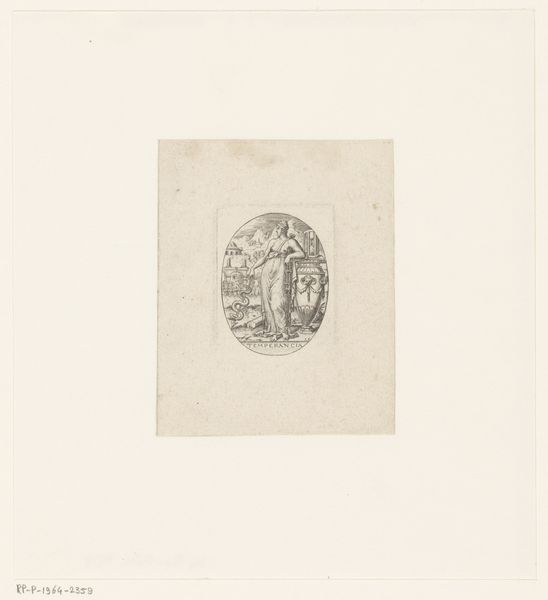
engraving
#
allegory
#
old engraving style
#
mannerism
#
figuration
#
history-painting
#
engraving
Dimensions: height 45 mm, width 33 mm
Copyright: Rijks Museum: Open Domain
Editor: Here we have Etienne Delaune's "Hercules Strangling the Serpents in his Cradle," created sometime between 1573 and 1580. It's an engraving, small and oval, yet incredibly detailed. I’m struck by the chaotic energy in such a contained space. What symbols do you see at play here? Curator: Ah, yes, look at how Delaune encapsulates the transition from innocence to heroic destiny. Notice the serpents—not merely beasts, but potent symbols. Consider how serpents traditionally represent chaos, primordial fear, or even the chthonic powers a hero must overcome. What comes to mind? Editor: Well, given it’s Hercules, the snakes might represent the trials he’s destined to face. But why portray them attacking him as an infant? Curator: Precisely. Infancy itself is symbolic – pure, vulnerable, but even then, forces seek to extinguish that potential. And see how Juno, often Hercules's adversary, could be interpreted as the orchestrator, her hand visible in the clouds? The snakes then are not just random attacks, but targeted, deliberate threats, highlighting Juno’s resentment rooted from Jupiter's infidelity with Alcmene. What else captures your eye? Editor: The women standing to the left seem...unconcerned? Are they not threatened? Curator: It is more interesting than it seems! They embody a sense of detached observation, acting as witnesses to the unfolding drama of fate. Delaune invites us to ponder this very theme: are we merely spectators in the theater of life or do we influence the destiny we behold? The way Hercules battles, the serpent, reveals his innate divine strength, prophesying his triumphs! Editor: This has given me so much to consider, and so many cultural lenses to consider when studying prints moving forward. Curator: Agreed, the cultural encoding embedded is more than meets the eye. Now we can never say a serpent is just a serpent again!
Comments
No comments
Be the first to comment and join the conversation on the ultimate creative platform.
